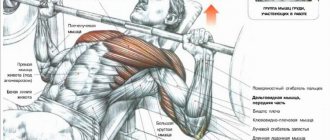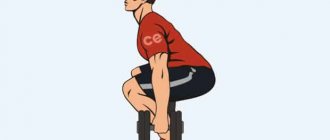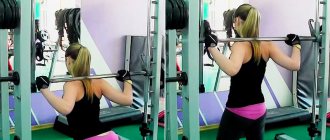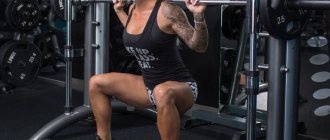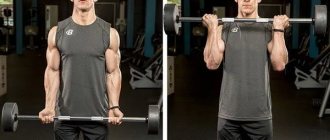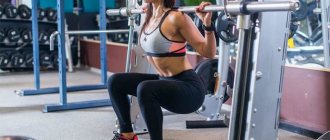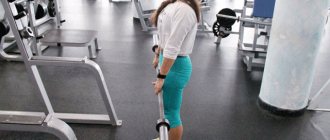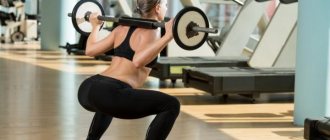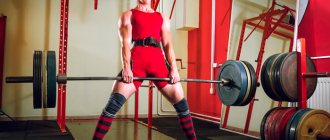Work every muscle group in your body without the help of a training partner, all on one Smith machine.
Author: Greg Merritt
Unless you're Willy Wonka, you won't ride an elevator that doesn't have a fixed path. You will be locked into the same route on every trip. It's the same with Smith Machine exercises - and there are many more of them than most bodybuilders realize.
In fact, this is enough that you can hit every muscle group in your body using just the Smith station, making sure that each rep is in the same plane up and down.
To squat safely without an assistant, in the 1950s fitness pioneer Jack Lalane came up with the idea of a barbell attached to a sliding frame device. His friend Rudy Smith improved the design, hired an equipment manufacturer, and sold the machines to gyms.
As manufacturers copied the concept, Smith machines grew in popularity. On some of these devices, the rod moves completely vertically. On others, the movement goes up and down at an angle of 7 degrees. And in the Jones machine - a recent version of the station - you can move the bar either vertically or horizontally.
While their multiple safety catches are great for squats or bench presses alone, Smith machines can be used for any exercise that involves a vertical plane.
Blocking range of motion has both a positive (allowing you to focus only on propulsive resistance, which increases strength) and a negative (inability to activate muscular action for balancing).
Read also: Breathing squats for 20 repetitions.
Smith removes the horizontal movement of the bar from arcing exercises such as biceps curls, effectively turning them into completely different movements (curls become pulls with the elbows pulled back).
The Smith machine also provides a height-adjustable bar for bodyweight pull-ups. As the following list of exercises shows, you can effectively train every muscle group using only the Smith machine.
Back
Bent-over rows, deadlifts, Romanians, and deadlifts can all be done Smith style, but depending on the machine, you may need to stand on a block or bench to get the full range of motion.
You can also do inverted rows (horizontal pull-ups), vertical pull-ups with your feet on a bench, and regular pull-ups by setting the bar at different heights and using your body weight (and additional weight if necessary) for better resistance.
Smith machine squats: technique
Before starting squats in the Smith machine, the athlete must take the starting position. It may differ depending on the goals set for the training process.
Initial position
To take the starting position, you need to fix the barbell by turning the bar at the desired height.
It is selected in such a way that in order to lift the barbell the athlete is forced to sit slightly under it.
Having set the height and set the desired weight, the athlete must go under the bar and place his feet in the desired position.
By the way, if you don’t yet know how to choose a working weight, then I explained it in this article.
- The basic position involves having your feet shoulder-width apart or slightly wider, your feet under the bar or slightly pointed out, and your toes pointing forward or slightly outward. This position allows you to create an even load on all muscle groups, but requires a certain flexibility if the bodybuilder has a body that is elongated relative to the legs. It is in this case that moving your feet forward a little helps. It is this position that I will show you a little lower in the diagram.
- The sumo position (where your legs are spread very wide and your feet are apart by about 60 degrees or more) is designed to focus on the inner head of the quadriceps and buttocks. In order to take the desired position, you should place your legs wider than your shoulders, at a distance that allows the athlete to squat until the thighs are “parallel” with the floor or even lower. The toes are turned very outward, which emphasizes the force on the inner quadriceps.
- If you place your feet shoulder-width apart or even narrower, moving them forward to a distance at which your knees form a right angle during a squat while your thighs become parallel to the floor, it becomes possible to create a load on the buttocks and outer thighs.
Typically, men prefer to take a basic position, women work more on the gluteal muscles and various areas of the quadriceps.
Having chosen the desired position of the legs, the athlete removes the barbell from the guards by turning the bar and rises, not allowing the knees to fully perform.
The shoulders are turned, the shoulder blades are brought together, the gaze is directed forward or slightly upward.
This will be the starting position for squats in the Smith machine.
Smith machine squat technique
Having taken the starting position, we begin to perform squats. Correct technique involves such movements.
- The muscles of the core, thighs and calves are tense. The lower back maintains a natural deflection, the back is straight, the shoulder blades are retracted. The gaze is directed forward.
- Inhaling air, we smoothly, without jerking or “falling,” lower to the lowest point, which is in the position of the thighs parallel to the floor, or in the position of a full squat (buttocks touching the calf muscles). It is important to ensure that during deep squats in the final stage of descent there is no rounding in the lower back; it must maintain a bend throughout the entire trajectory.
- Having reached the bottom point, without stopping the movement, the athlete, while exhaling, smoothly and powerfully extends his hips, resting the entire surface of his feet on the floor, as if “pushing off” from it with his heels (HEELS ALWAYS PRESSED TO THE FLOOR!). When lifting, it is important to focus on the work of the hips and buttocks, in no case helping to push the weight out with movements of the lower back!
- The top point coincides with the starting position; however, you cannot fully straighten your legs, “including” your knees - this transfers the load to them and can lead to injuries.
- After completing the approach, the barbell is fixed by turning the bar.
For convenience, I have made for you a visual graphic of how Smith squats should be performed:
- It is recommended, depending on the phase of the training cycle, to perform: from 6-8 to 8...15 squats per approach, keeping the time the muscles are under load within 35...60 seconds.
- Number of approaches: from 3 to 5.
It is prohibited to change the position of the legs after accepting the starting position. You can choose a position with an empty bar; we also do one or two warm-up approaches with it.
Breast
You can perform the bench press on a flat, incline, or negative incline bench. For something different, try bench presses with barbell throws (press the barbell so hard that it flies out of your hands on each rep, using a light weight) or one-arm alternate presses.
Execution technique
The exercise is performed naturally and is essentially a regular pelvic lift. The sequence of the exercise is as follows:
- Place the bar in the machine at the height of the bench and hang the required number of weights.
- Position the bench so that when performing the exercise, your shoulder blades are located on the bench, and the bar is at the level of the hip bones.
- Take a “bridge” position – shoulder blades on the bench, feet shoulder-width apart on the floor. The body and thighs are parallel to the floor, and the lower leg is perpendicular to it.
- Remove the bar from the supports and lower your pelvis down through the full range of motion.
- Inhale and as you exhale, lift your pelvis up, squeezing your buttocks at the end point. Do static tension for 1-2 counts.
- Repeat the movement the required number of times.
Note. Your feet can be placed not on the floor, but on a step platform with a certain number of lifts. This will significantly increase the range of motion. Accordingly, it is better to load the muscles of the buttocks.
Shoulders
Because in the event of muscle failure you can safely flip the bar onto the snap and stop the exercise to ensure your safety, Smith is great for front and overhead barbell presses.
Read also: 3 myths about strength training.
For the medial deltoid, do lateral barbell raises with a bent arm where the bar is located just above the elbow. For the anterior deltoid, press with one arm while sitting with your side to the hyphae. And for the rear delta, row the barbell with a wide grip in an incline position, or lying with your chest on an incline bench.
Varieties
There are two main types of Smith machine - vertical and inclined. As you might guess, in the first case the bar of the bar will follow straight up, and in the second - at an angle. Exercise machines are designed for different exercises. Having correctly selected the required trajectory, the athlete can be sure that the execution technique will remain ideal.
Exercise machines can also be counterweighted or two-way. The first ones practically do not differ in functionality and form from the classic ones. In them, the starting weight is compensated by a counterweight located inside the frame structure. The two-lane Smith machine is a 21st century invention. Here the bar moves both vertically and diagonally.
Exercises for a simulator with a vertical trajectory:
- lunges (legs);
- bench press from behind the head (to work the deltoid muscles);
- shrugs (trapeze);
- calf raises (working the calf muscles).
Incline exercises:
- performing classic squats with a barbell (the gluteal muscles are developed);
- barbell press: lying, at an upward angle, standing, sitting;
- deadlift;
- Bends with a barbell;
- bent over row.
If a fitness club has both versions of the exercise machine, the athlete can easily work out all muscle groups. With the proper approach and correct technique, the described rocking chair will become an ideal assistant in building the body of your dreams. By following the instructions, even beginners can master the Smith machine and basic exercises.
Vertical
Inclined
Smith Machine Training Tips
- Stops, where the bar is raised or lowered one notch after each set, allow you to perform drop sets on bodyweight exercises.
- The Smith machine is a handy tool for performing equal-weight exercises in a superset, such as overhead press + row.
- In some “arc exercises,” such as curls, you will need to bend your wrists toward you as you lift the weight to prevent them from stretching.
Muscles involved in the exercise
- Deltoid muscles: anterior and middle bundles;
- clavicular part of the chest muscles;
- partially upper trapezius muscles;
- triceps (receive load due to extension of arms at the elbows)
- as well as the serratus anterior muscles.
Difficulty level: suitable for both beginner athletes as an analogue of the Army barbell press, and for more experienced athletes for multi-repetition training while working on relief, as well as increasing the intensity of training, “finishing off” the deltoid muscles at the end of the workout;
Advantages of the bench press Seated barbell press in the Smith machine:
- The ability to concentrate directly on the deltoid muscles, feeling the tension in them throughout the entire range of motion, without being distracted by maintaining the balance of the barbell (leaning forward or leaning back);
- Regardless of the level of weight load, the exercise is performed without the support of a partner, since the bar at the end of the approach is placed on special handrails and fixed with hooks on the machine.
Follow the correct technique for performing the exercise to target the deltoid muscles and eliminate the possibility of injury.
Smith Machine Training Basics
- Bar movement is limited to a vertical or slightly inclined position.
- Multiple safety latches allow you to train to failure without a training partner.
- By removing any horizontal movement, many exercises will be modified.
- Smith works best when combined with free weight exercises.
An example of a triceps workout in a Smith machine
- Seated Overhead Extension – 3 sets of 10-12 reps
- Close-grip bench press – 3 sets of 8-10 reps
- Reverse bar push-ups behind your back – 3 sets of 8-10 reps
- Triceps push-ups from the bar (flexion/extension of arms) – 3 sets of 10-15 repetitions
Why do you need a Smith machine?
The Smith machine is suitable for loading the buttocks, legs during squats and the chest, arms and shoulders during various presses. Great for girls.
When a person just starts training, his muscles are not ready for the classic squat. Try squatting with an empty bar when you don't have at least a month of training under your belt. It will be difficult: the knees shake, the pelvis tilts forward and back, and the bar tries to slide onto the shoulder blades. For such cases, a Smith simulator is needed.
- The Smith machine allows beginners to perform a number of exercises for targeted muscle training. After this you will be able to work with free weights!
- You can work without a partner. At any time you can rotate the bar and lock it in any of the possible positions. This is very beneficial when you are alone in the room, or everyone is busy. Imagine the free barbell situation: you're sitting down and want to get up, but the weight is too heavy and you can't lift yourself up. What to do? Throw! Sometimes this thought comes too late. And sometimes there are a lot of people nearby, you can hurt someone. No proper technique will help in this situation. A partner is one thing, but technology is another.
- You won't fall! When doing squats on a Smith machine, you rely on a bar that moves strictly in a vertical direction. This means you don't have to worry about your balance. Just lean on the bar.
Other Squat Variations
Below are other options for exercises on the Smith machine.
Smith Front Squats
They are used mainly as an auxiliary workout and abdominal tightening.
How to do it:
- Hands crossed in front of you. The projectile is located on the forearms.
- The back is in an upright position, the chin is raised.
- A smooth squat is performed, then a rise.
Number of repetitions – 8-12 times.
Plie or sumo squats
The muscles of the inner thighs are actively involved in the work.
How to do it:
- The bar is supported at the back, the back is slightly tilted forward.
- Feet are spread as far apart as possible, knees and toes pointing out to the sides. The stomach is pulled in.
- A slow squat is performed, the buttocks are tense.
- Return to the starting point.
Repeat 12-16 times.
Squats and Lunges
Lunges allow you to work out the upper leg area more efficiently.
Correct execution of the exercise:
- Starting position – bar on back of shoulders.
- The right foot takes a step, the left foot rests the toe on the floor.
- A squat is done; there should be a right angle between the thigh and shin.
- Return to original position.
Lunges are done 8-10 times on each leg.
Contraindications and precautions
If you have serious injuries to the knee joint, diseases of the musculoskeletal system, varicose veins, during pregnancy or immediately after the birth of a child, any intense activity is stressful for the body, especially when it comes to strength training.
You can plan to pump your lower body using a Smith machine only after prior consultation with your doctor.
Attention! Ignoring basic safety measures and non-compliance with technique when performing squats can lead to injuries and poor health.
Incorrect body position creates increased stress on the spine. Sudden, too deep squats or lifting a load on your toes can cause ligament ruptures and sprains.
